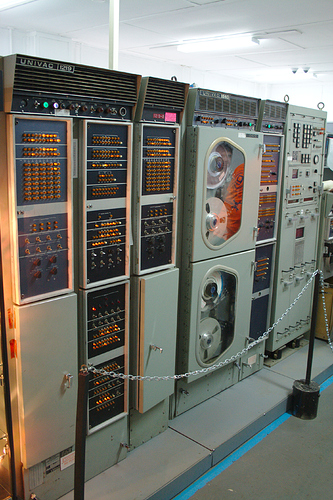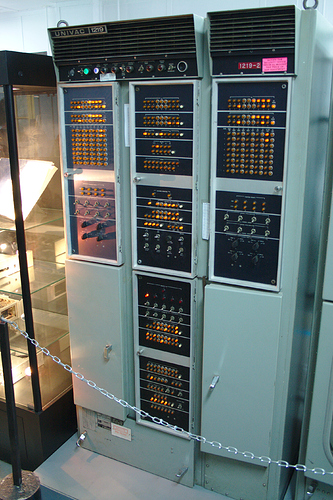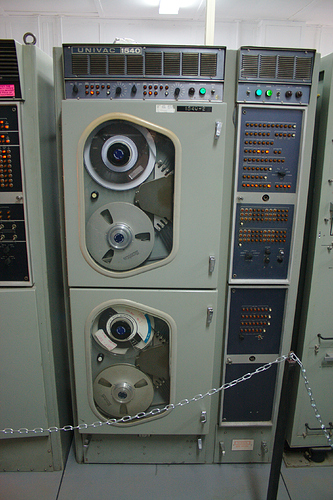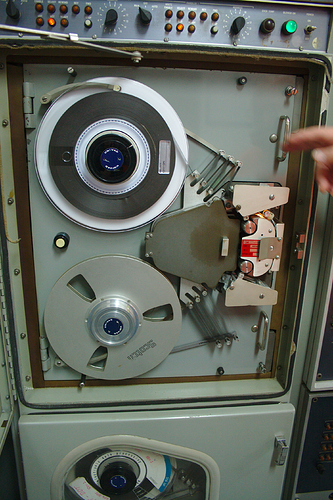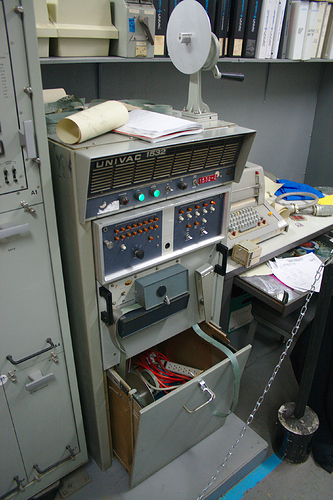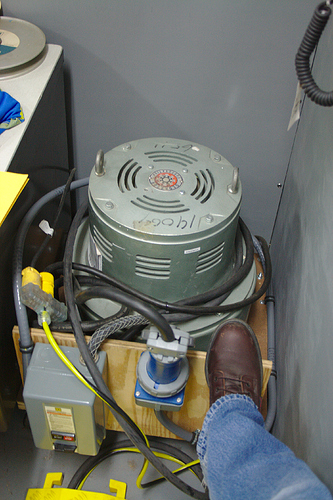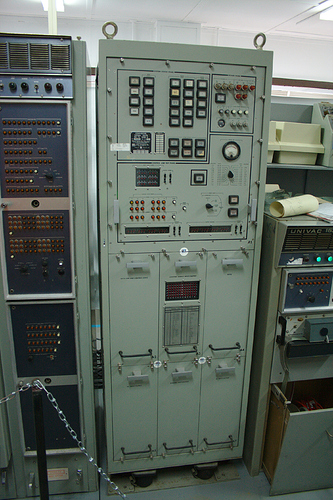I went to VCF East this weekend, and among many highlights (including speaking with Brian Kernighan and listening to a fascinating Kernighan/Thompson interview!) for me was the UNIVAC 1219 in the museum. I took some photos that I thought I’d share here.
The entire machine is housed in half a dozen large cabinets (past the ones visible here there is an additional I/O cabinet with a paper tape unit barely visible on the right, and then a table with a Teletype terminal past that). Unfortunately I didn’t have the time to fully understand what all of the cabinets are, but the CPU is the first cabinet on the left, followed by a dual tape drive and controller, then a unit of unclear purpose to me that I believe contains power supplies and diagnostic equipment (certainly it has a power supply monitoring panel), and then the aforementioned paper tape reader.
The CPU is a true blinkenlights wonder, and it was powered on and computing. It was running some sort of demo program (I believe I heard that it was calculating pi), and the register/bus displays (the square grids above center left and right) were truly gratifying to watch.
The dual mag tape unit was approximately the same size as the CPU, and employed a typical vacuum mag tape system.
The top reel of each drive is the removable reel, and the bottom reel is the reel that stays in the drive. An optical sensor is used to detect end-of-tape at blistering speeds, and the swing arms with loops of tape top and bottom keep the tape from being damaged when the motors start and stop.
Bootstrap on this machine is from a tiny half-rack-sized paper tape unit that appeared to use standard Teletype 8-level tape. This is an optical reader, but was not particularly fast in operation; I didn’t catch its speed, and maybe it has more than one speed, but I’m guessing it was running at something less than 10 cps in the operation I witnessed.
This particular machine was a Navy unit, and runs on 400 Hz AC, so the museum is powering it using a 3-phase motor to 400 Hz generator set (size 9 1/2 Red Wing for scale). The resulting whine is not terribly pleasant to listen to.
The remaining cabinet is what appeared to be a power supply and diagnostic unit, although as I said, I didn’t get the skinny on it.
I am sure that there is far more authoritative and detailed information on this machine on the 'net, but I was unprepared for how impressed I was by it, so I wanted to share it with you all.
VCF East in general was a blast, and I recommend it! You can visit the Vintage Computer Federation for more information about both the VCF events and the permanent museum.
